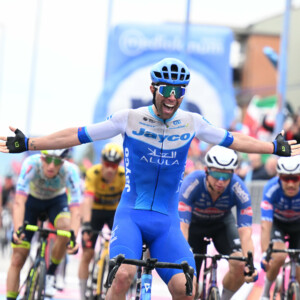It was a long and somewhat bumpy road. But AusCycling officially came into existence back in November 2020. Three years on, Bicycling Australia’s Peter Maniaty sat down with AusCycling CEO, Marne Fechner, to reflect on the journey so far and ask ‘what comes next’.
Speaking with Marne Fechner for the first time, she comes across as many things. Confident and approachable. Strategicand pragmatic. Driven and not easily perturbed. Over the course of our enlightening hour-long discussion, it also becomes clear the former CEO of Netball Australia is arefreshingly straight shooter.
Which is probably just as well. For when Fechner began as the new boss of Australian cycling back in February 2021, she inherited a road as winding and gruelling as any Hors Catégorie col. Charged with uniting a fragmented sport still nursing the wounds of aprotracted—and at times bitter—five-year restructuring journey, there were major opportunities to be seized, but equally significant challenges to be navigated.
BICYCLING AUSTRALIA: Thanks for speaking with us, Marne. When you became AusCycling CEO, you had had to bring together a hugely disparate group of state-based bodies and disciplines. No small task. What are your reflections on the journey so far?
MARNE FECHNER: My first reflection is that I can’t believe it’s been almost three years. But I count myself as fortunate. When I came in, the hard governance work and reform had been done. That was a five-year journey of consultation and engagement. My role was actually to focus on what the new organisation was going to look like. That was one of the things that really interested me about the role. This is the largest governance reform in Australian sport and whilst governance mightn’t be sexy, in terms of how sporting organisations set themselves up for success it’s an extraordinary opportunity.
There’s a real sense of obligation to the broader sporting sector to demonstrate that bringing all of the (cycling) disciplines together under one body just makes sense. It’s happening around the world and, from a sport perspective, cycling is leading the way in showing that a unitary approach can work. So, yes, there are a lot of weary people as a result of the change, but there’s also really good energy and passion—and that’s what sport is all about, people caring. When you look at pure numbers, we’re one of the biggest activities in the country. We have a community of six million people who ride bikes. That makes us hugely relevant.As an organisation how do we grow the love of racing? But also how do we connect with those six million people? How do we become more relevant to the broader cycling community so we’re bigger and stronger?
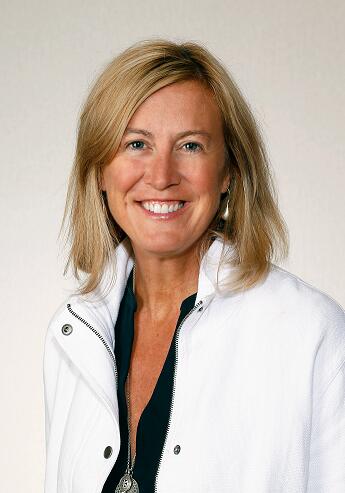
BA: A lot of promises were made during that transition period between Cycling Australia and AusCycling, and there’s been plenty of criticism over the past few years. How hard has that been to manage?
MF: Change processes are never easy and it always takes longer than you think. There were lots of commitments made across that five-year period leading into the formation of AusCycling and people don’t forget those things. So, yes, one of the biggest things we’ve been dealing with is just managing expectations. Some of the things (promised) were realistic and some were probably unrealistic.
Looking back, I always say in the first twelve months we were building a new plane and flying the old one, whilst trying to manage the transition. We were also still in Covid so it was all done against a backdrop of the pandemic. From there, it was about asking what was our strategy going forward and how do we engage across multiple stakeholder groups to actually establish it? That took another twelve months. 2023 has really been the first year where we we’ve come in thinking, ‘okay, there’s no major chaos, we have a really clear strategy’. Now it needs to be implemented out in the community. That’s what this year has been about.
BA: You mention operating against the backdrop of Covid which obviously created plenty of challenges. But it also turbo-charged cycling participation levels, both in Australia and globally. Didn’t that create opportunities?
MF: When we were developing our strategy, one of the key things we saw was that prior to Covid, there had been ten years of decline in riding bikes across the board. If that isn’t a strategic imperative for everyone in Australian cycling, I’m not sure what is! Then when Covid hit everyone felt good (about cycling’s increased popularity). But it was more of a sugar hit, because no one had really thought about how to ensure things didn’t just go back to normal when it was all over. I think, as an entire industry, cycling simply wasn’t ready to fully capitalise on what was a very unique situation.
BA: Your background is in netball, both as an athlete and as an administrator. Coming from such a different sport, were there any things that surprised you about cycling?
MF: Nothing has really blown me out of the water. Whilst, yes, cycling is a different discipline (from netball), at the end of the day what is sport? It’s about community, it’s about pathways, it’s about performance, it’s about being relevant. Perhaps one of the awakenings coming from a sport like netball is that cycling is inherently dangerous. When you have the potential for serious injuries and even deaths, how do you manage those risks and support communities through grief? That’s not something most business need to deal with, so I think that has been one of the biggest adjustments.
BA: Cycling Australia was never particularly engaged in advocacy. But AusCycling seems to be showing a lot more interest in taking a lead in that area.
MF: That’s right, but it’s not always about us being the ones who actually do it. One of the key parts of our strategy is working in partnerships. For example, The Amy Gillett Foundation does a fantastic job in terms of cycling safety advocacy, so we don’t want to compete with them. Rather, we want to partner with them and say, ‘Imagine if the two of us are working together, what could we do if we stand side by side?’ I don’t want us to be arrogant and think we have to be the best at everything. There are plenty of people and organisations already doing great things in our communities. How do we partner with them to drive change?
BA: What are some of the biggest ‘wins’ for AusCycling in the first three years?
MF: I think one of the problems (with criticism of AusCycling) is that lot of the things being done are structural; they’re things you can’t actually see. But, without question, the strategy piece has been a really big one, the first phase of that will take us to the end of 2024. Fundamentally, if we were going to be different, we knew we needed to spend time thinking about that because otherwise, inherently, it’s just rinse and repeat. ‘Oh, there’s another year, let’s go again.’
One of the core pillars within the strategy is Lasting Champions, which is all around our pathways and our high-performance program. But another pillar is about Winning Hearts and Minds. That led us to bike education. Historically, being a leading provider of bike education has never been really our remit. But if you can reach and inspire kids between the ages of five and 12, we know they’re 10-15 times more likely to be connected to you throughout their lifetime. That’s a really important cultural shift we’re trying to drive through the launch of a new program which we’ve been piloting, AusBike.
Parents have long been the number one educator of children riding a bike. But we’re now moving into a generation of parents who perhaps didn’t learn how to ride a bike themselves, so AusBike is a big part of addressing that. We’re not saying we’re going to become another Auskick (the AFL’s hugely successful junior program which began back in 1998), but if we can be the leading provider of bike education and if bike education becomes something kids have to do in primary school—and, yes, that’s a big audacious goal—it will be a huge win for cycling in ten years’ time.
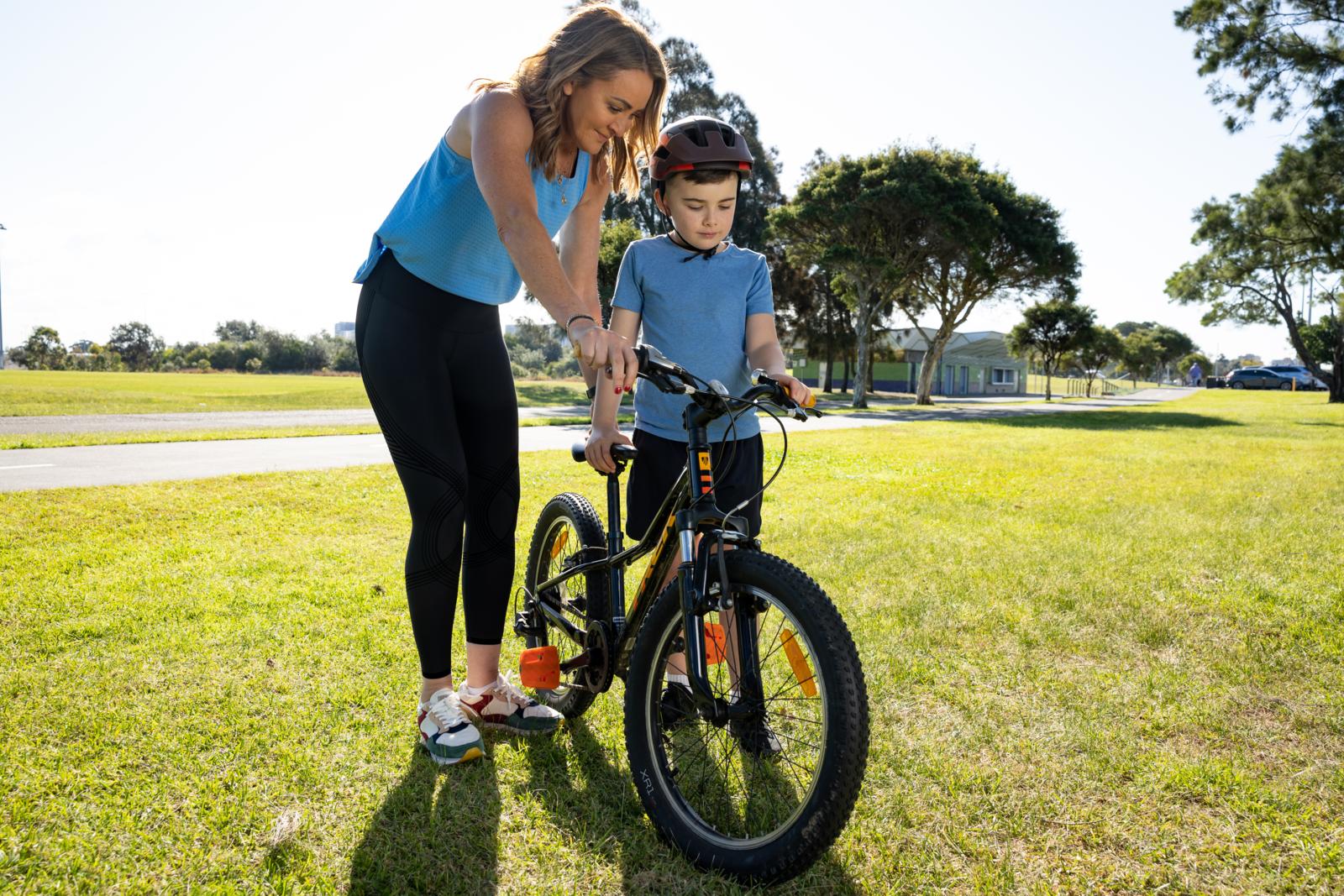
BA: There was a lot of talk that the unitary AusCycling model would provide a sharper edge in the drive forcorporate sponsors. Yet according to the 2022 AGM Report, there’s still just 2% of funding coming from sponsorships. What kind of energy is that occupying?
MF: It occupies a hell of a lot of our time! But it also brings me back to one of our key challenges around managing expectations. I was a part of the program that saw netball’s commercial growth in Australia, however that process took 10-15 years. Everyone needs to be realistic. AusCycling is an opportunity for us to be different. It means we have less governance structures in place. But we still have to make it happen and that takes time.
Right now, we are heavily supported by the Government [59% of revenue according to the 2022 AusCycling AGM Report—Ed]. That’s brilliant, but we want diversified revenue. A critical part of that is our commercial strategy which is more than just sponsorship. It’s about ‘product’. Because at the end of the day, if you think of the six million cohort of bike riders as potential customers, some of them might be club members, but others might be fans who buy tickets to events and never race. How do we start thinking more broadly? Because doing that gives us the commercial credibility to really grow and invest in the sport.
BA: Specifically on sponsors, leading up to the formation of AusCycling there was a lot of talk about landing that British Cycling HSBC-style ‘big fish’. I think a lot of people had that expectation. Are there big fish to be found in the not-too-distant future? Or do we need to be patient?
MF: Again, I think it is the long game. The market is still recovering from Covid and let’s not forget what that did to the sponsorship market in general. Everyone’s still hurting in terms of less discretionary spend in the sponsorship space. Having said that, we’ve recently announced the AustralianCycling Team partnership with ARA which is fantastic. That’s a great win. Looking ahead, it’s actually about being really clear. We have a fantastic value proposition. We have brilliant athletes. We have a passionate community. We have social relevance in terms of riding a bike. It’s great for your health, physically and mentally.
Over the next decade cycling is also going to be more and more relevant from an environment perspective. How can that be wrapped up as part of our story as well? When you think about what organisations are looking at in terms of environmental and social impact, that makes us a great partner. So it’s about unleashing that story, but also making sure that once we have these partners on board, we have an organisation that’s capable of delivering and looking after them.
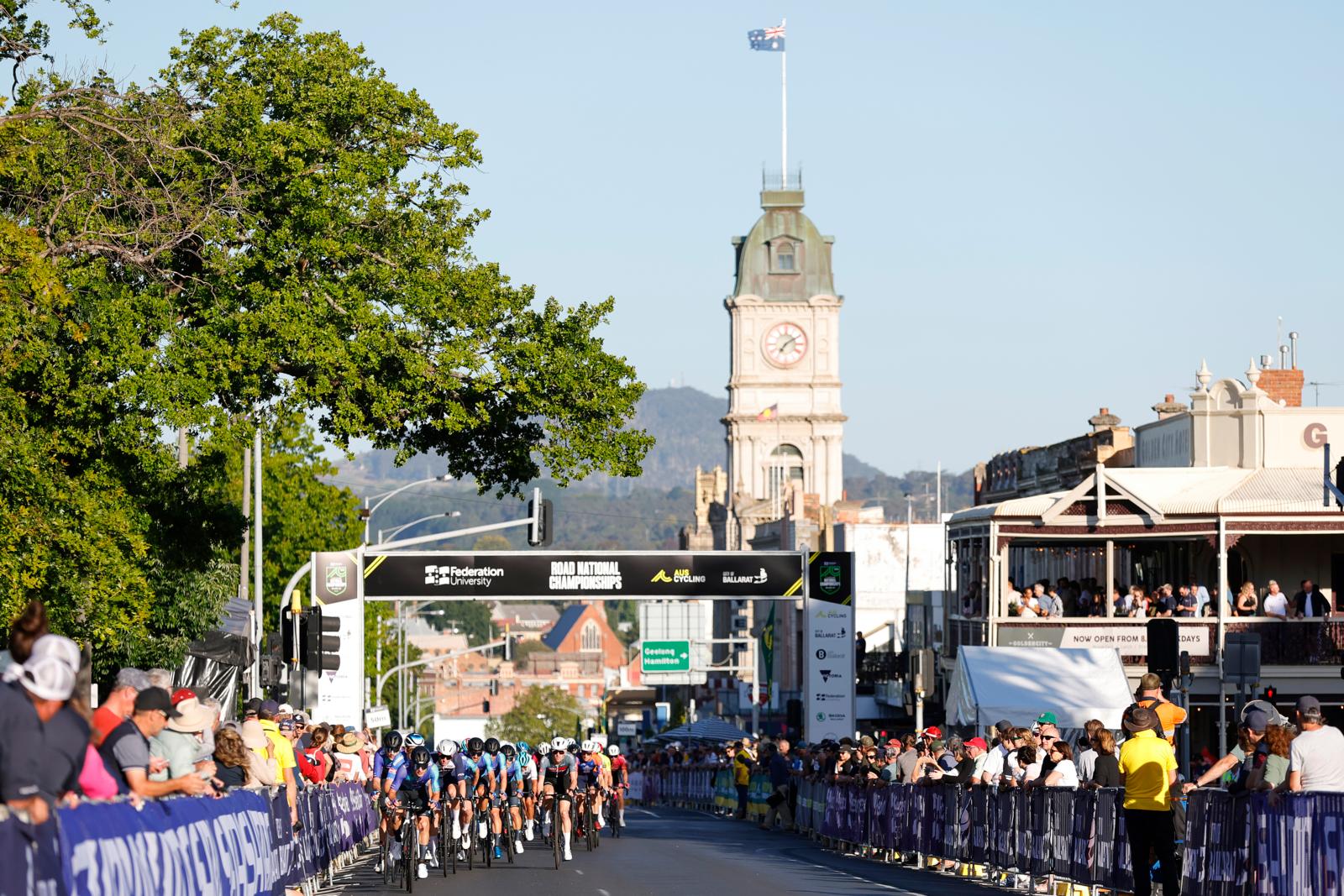
BA: Another major opportunity looming is the ‘green and gold runway’ leading into the 2032 Olympic and Paralympic Games. How important is that for cycling in Australia?
MF: It’s really important. Olympic and Paralympic sports will be in the spotlight a lot more, so how do we utilise this once-in-a-lifetime opportunity to fast track our strategy? How do we get more focused investment in our programs, build the profile of our athletes, and create more opportunities for all parts of the sport? One of the advantages of hosting an Olympics is that there will be more interest in holding major events. So what UCI events can we bring to Australia over the next decade? That will give our athletes an opportunity to perform in front of home crowds. But it (the economic windfall from these events) will also mean less financial pressure on our programs.
The other thing I’d say, is that in the lead up to 2032 we need to be really clear and focussed on where we’re going to get the greatest gains. I think there will be some new infrastructure and there will definitely be (Olympic-based) programs. Hopefully the launch of AusBike will provideopportunities to dovetail into the Olympics. Brisbane is already doing a great job in terms of cycling infrastructure, but how can we become world-leading in terms of a city that supports not only sporting infrastructure for cycling in all of its different disciplines, but also just riding? How can we use the Olympics to become a leader in mobility infrastructure to make people feel safer about riding their bikes?
BA: I guess the flip side of the ‘Olympic effect’ is losing amajor event like the 2026 Commonwealth Games?
MF: It’s so disappointing that we’re not going to have those opportunities in 2026. The Commonwealth Games were super important, especially to regional Victoria. Whilst local communities will still benefit with some of the Government funding commitments in terms of facilities, it certainly won’t capture the same level of workforce, athlete and profile benefits.
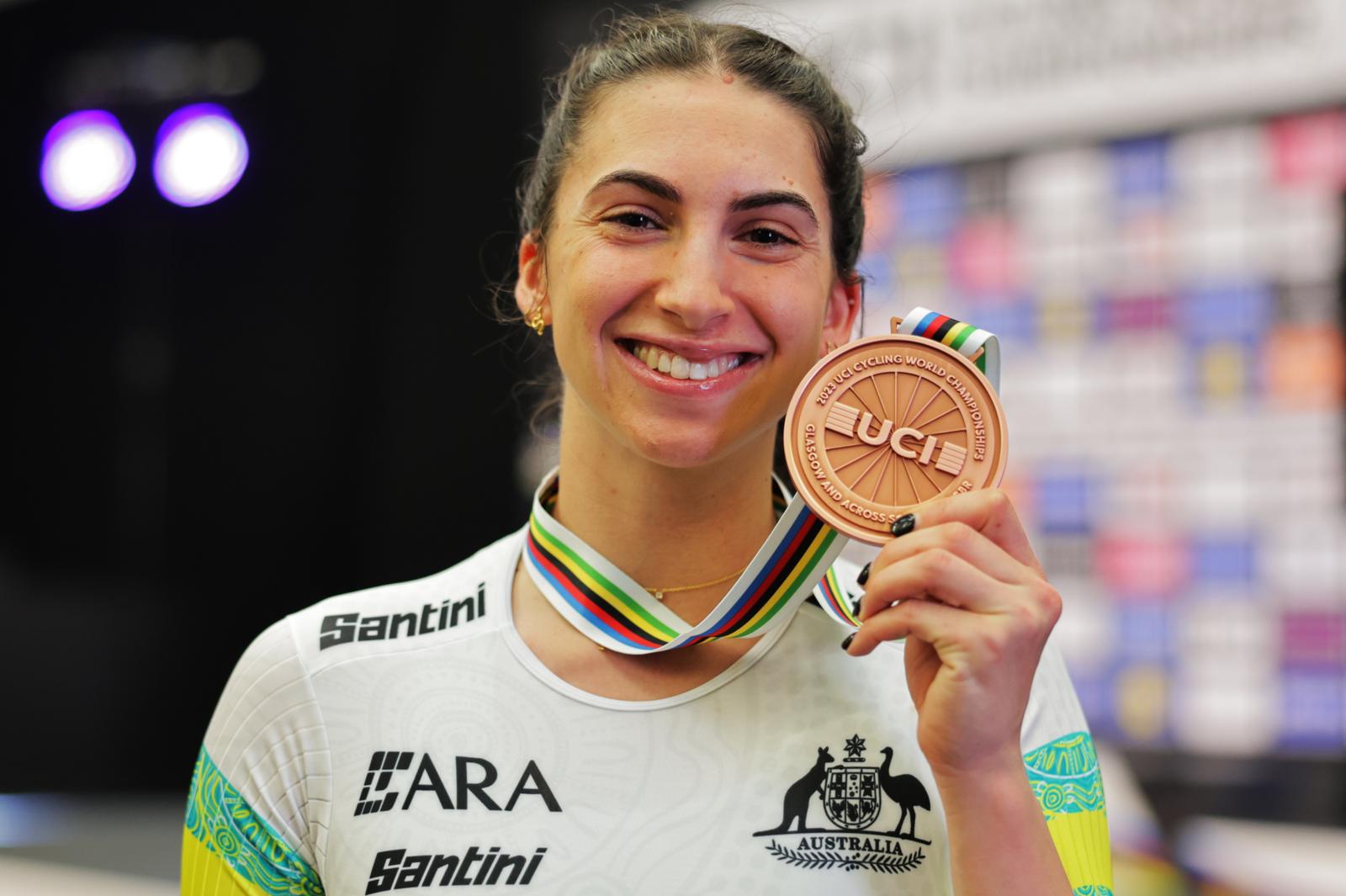
BA: Clubs have always been the heart and soul of cycling in Australia. Can you provide some insight into how you’re supporting them?
MF: We have 450 clubs and they’re the shop front of the cycling experience, so we know we have to really double down on our relationships with them. In doing that, we’re also very conscious that mountain bike, road, track and BMX all have different needs. So, whilst there’s one overall AusCycling strategy, it doesn’t have to be homogeneous.
One of the things we did early on with our strategy development was ask, ‘what are the big issues for clubs?’ We came down to twelve main issues, from attracting members, to sponsors, to junior development programs, to infrastructure and facilities. They’re probably the things you would expect, but that gave us really good high-level insights in terms of the things that are important to clubs. What we’re doing now is getting more granular.
Media is one area. How do we help clubs promote their events? How do we help them make use of social media? How do we help them raise their profile with earned media through local print and radio? We’re keen to develop thingsthat are going to be really useful for clubs, whether it be templates or tool-kits or little video hype reels. But it’s not just media. For example, how can we create an advocacy toolkit? Okay, if a club wants to start working with a local council around upgrading their facilities, what could they be doing? We want to give them a narrative and some of the tools to start the process and gain that local support. Then perhaps we might be able to come in if State Government funding is required. It’s about having those layers. But having said that,we currently have just one person working in government advocacy.
From a club point of view, we’ve been doing a lot of testing and learning over the last couple of years. For example, we know we’ve been sending out a lot of information, it’s almost like we’ve been a fire hydrant spraying and bombarding clubcommittees with information. But information is only ever relevant when you need it, otherwise it’s just white noise. So, this year what we’ve started doing is having bi-monthly club forums with everyone, and then we also have a monthly update from myself and Craig Bingham (AusCycling Chair). If people only read those two things, they’re going to have a good sense of what’s going on, who to contact and where to get more information. I think at the last club forum we had over 160 clubs represented which is great. The more relevant the forums are, the more clubs feel like, ‘okay, we’re engaging, we’re giving feedback, we can see change is happening’. Whilst things might not always happen immediately, it’s about keeping people and clubs connected.

BA: One of the big, almost existential, challenges facing clubs is the loss of access to courses. Places we’ve raced for decades are no longer available. Insurance costs are prohibitive. Police aren’t always cooperating. LGAs and communities aren’t seeing the value. What is AusCycling doing to help clubs and event organisers?
MF: You’re right, and it’s happening all over the country. One of the biggest factors is insurance, certainly for road cycling, but it’s really across the board. We’re becoming a hard-to-insure sport, certainly in the way insurance is currently structured. So for me, it’s thinking about what do we need? Are we going to change the police? That’s long term. Are we going to change local government thinking? That’s long term.
We need to remember there have been a lot of smart people trying to solve this problem for a long period of time. They’ve worked really hard at it, but we are where we are. So, what actually has to change? What are the options available to us? How do we need to evolve? Do we have to let go of some things that we’ve done in the past to actually ensure we can find a model? We don’t have all the answers yet, but the only way we can come up with something is keeping an open mind to potential change. Because trying to shoehorn the way we would like to do things into an environment that’s not receptive, it’s simply not going to work.
BA: While on the subject of insurance, rising premiums drove membership costs up once again back in July. What would you say to members who might be feeling a little bit aggrieved about that?
MF: Passing on insurance increases to members is fundamentally not what we want to do. But what I would say is 50% of the recent increases were met through internal cost cutting. Of course, finding savings in the AusCycling budgetmeans we can’t do certain things, which isn’t ideal either. But the reality is insurance is almost a hard cost of membership participation in the sport. It’s why we are actually looking at whether we can sustain the current insurance program. There are some members who love 24/7 public liability cover and there are others who are happy to go without. How do we keep providing flexibility and options for members? It’s about demystifying membership. It’s about managing our risk. It’s about evolving the insurance program so there is possibly more choice. If you want to pay more, you can. We’ll help you get the best deal possible, but it’s your choice.
I’d also add it’s not like the insurers are rorting the system; it’s actually based on our claims history unfortunately, which is why we just have to own this and then talk about the options. We saw a $1.6 million increase in our public liability premiums, which every club needs to run races and riders need to be protected, in just one year. That’s a pretty big disruption. Whilst our sport has reserves, they’re not reserves like some of the commercial professional sports. We don’t own a lot of assets, so $1.6 million is not an easy fix. I have huge empathy (for members who might be feeling aggrieved). There was a lot of work done to say, well, what’s the absolute minimum that we can pass on to members? As I said, it’s not what we wanted to do, but it’s the economic environmentwe’re operating in.
BA: Let’s talk about RoadNats. After almost two decadesin Ballarat and Buninyong, the event will be on the move in 2025. How close are we to knowing where it’s going?
MF: We’re relatively close. There’ll be announcements made by the end of the year. Ballarat and the Victorian Government have been fantastic partners and we’ve loved being there. Ballarat almost feels a bit like the MCG of Australian cycling, and is a place where we’ve really grown the event, so it will definitely be back at some point in time.
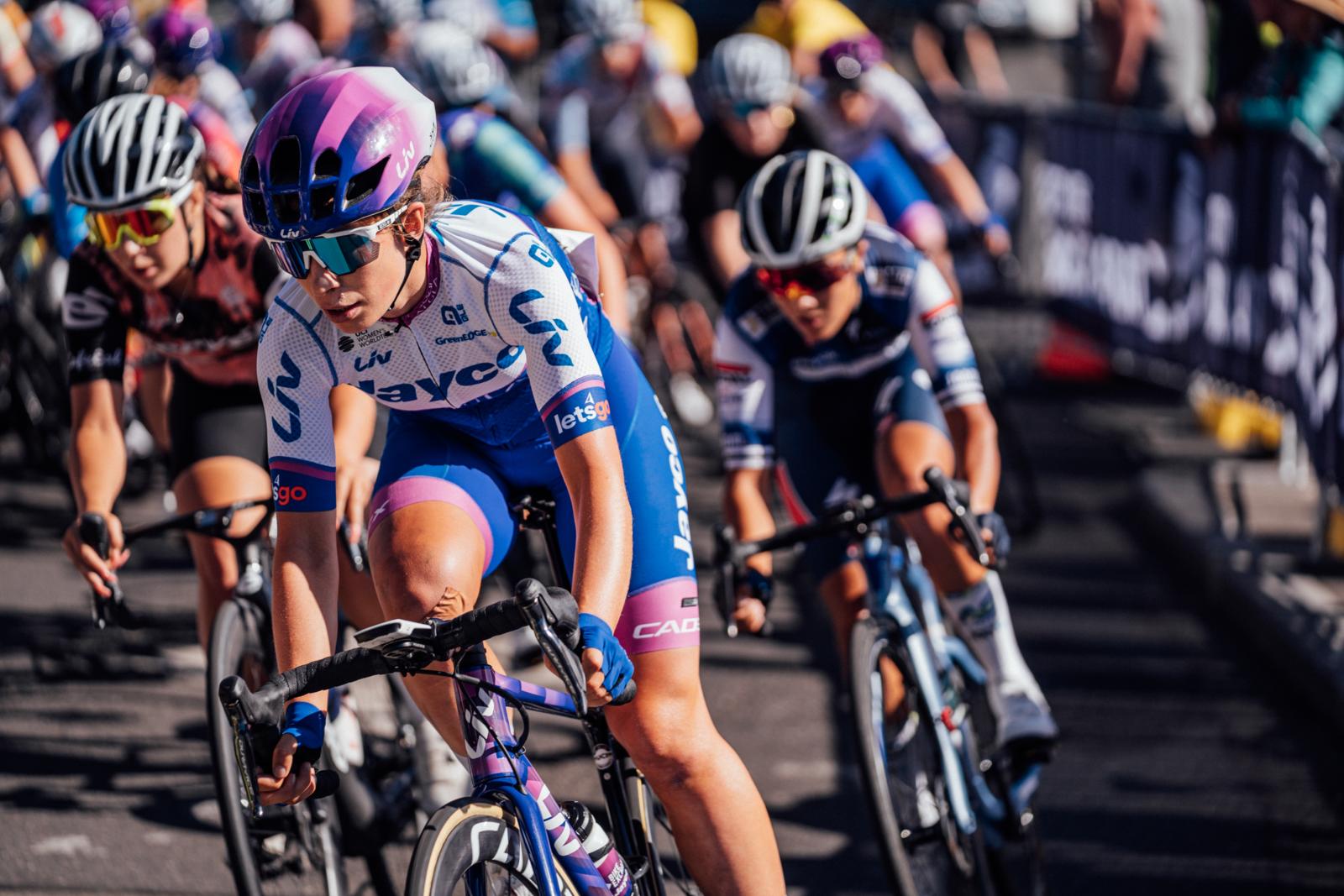
But there’s such a romatic association with road racing right across Australia and there’s been a lot of interest. Whether it’s driven by the surge in cycling during Covid or the growing relevance of cycling within State government plans or the fact that we have an Olympics coming up. Who knows? But for us, this event is only going to keep growing and evolving. I’m a firm believer that when you move things around, every location puts its own spin and natural character on the event. I think where we’ve landed is that it’s a good and healthy thing for an event to move around. It’s an opportunity to change things up and partner with different delivery agencies, regions and towns. Hopefully by doing that, it also gives us an opportunity to have deeper conversations.
BA: Final question. If we were to sit down and talk again in two years, what would ‘success’ look like for AusCycling? What would you want us to be talking about?
MF: I definitely hope we’d be talking about how many kids are participating in AusBike and the success of that. I think we’d be talking about the launch or evolution of our event portfolio. We’ll be talking about the number of international events that we’re attracting to Australia. Rather than 55,000 members, we’ll be having a genuine conversation around the growth in that space, not just from a membership perspective, but how we’re connected to a whole different cohort of cyclists and fans. Broadcast is also going to be really important.
SBS are a fantastic partner, but we have a growing event portfolio so we’ll be talking about where that sits within our story. We’ll be talking about commercial partners and, after the first phase of our strategy which was always about strengthening the foundations and making sure the organisation and the sport was actually healthy, the next stageis all about growth. So, I think we’ll be talking about that too, setting the aspiration for 2024-2028 and those targets in terms of what success look like, in ways we can tangibly measure.
BA: Lots to talk about, indeed. Good luck with it all Marne.


